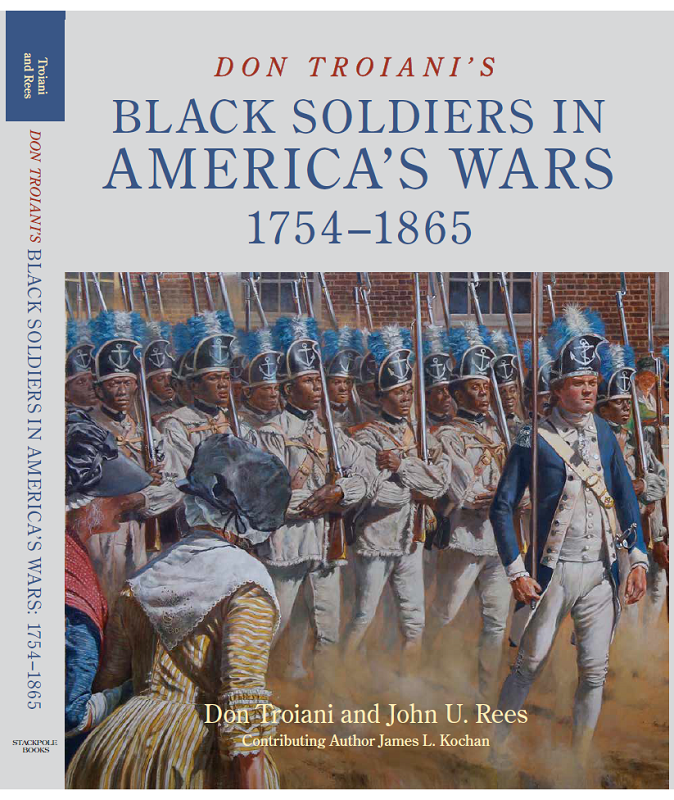Black Soldiers who Fought In American Revolution Are Focus of Lecture
COMMON AND FORGOTTEN: John Rees’ book about the under-appreciated efforts of Black soldiers during the American Revolution will be discussed by the author at an upcoming Princeton Battlefield Society event at Morven.
By Anne Levin
The second event of the Cadwalader Lecture Series, one of the Princeton Battlefield Society’s (PBS) initiatives leading up to the upcoming 250th anniversary of the nation’s birth and the Battle of Princeton, honors Black History Month.
A partnership with the Battlefield’s neighbor, Morven Museum & Garden, the talk on Thursday, February 27 at 6:30 p.m. at the museum features author and historian John Rees discussing the mostly unknown and under-appreciated role of Black soldiers in the fight for independence. Rees’ new book Don Troiani’s Black Soldiers in America’s Wars, 1754-1865 was written with Troiani, a prominent military artist. Rees will be on hand to sign copies of the book at the event.
“There were 4,500 men who fought at the Battle of Princeton. But we only hear names like Mercer and Washington,” said Mark Herr, a PBS board member involved in the preparations for the sesquicentennial. “These soldiers were ordinary Americans — carpenters, sailors, tailors — who turned into a fighting force that defeated the prime fighting force of the time. And among the forgotten common soldiers were Black common soldiers, who were even more forgotten.”
Fourteen Black soldiers have been identified as part of the Battle of Princeton. “As many as five to 25 percent in the American army during the Revolution were Black,” said Herr.
The lecture series’ first installment was a talk by Richard Brookhiser on painter John Trumbull, held last November at the Nassau Club. Some 75 people attended, and Herr is hoping for another large audience at the Morven event. The goal of the series, among several initiatives leading up to the 250th anniversary, is to magnify the impact that the Battle and the Battlefield can have on today’s awareness of history.
“We wanted to create some intellectual capacity to teach current and future generations about what happened at the battle,” said Herr. “These were ordinary men doing extraordinary things. They fought on January 2 at the Battle of Trenton. Then they marched all night and arrived around the Quaker Meetinghouse in Princeton on the morning of January 3rd, fought the British, and won. Then they had to march off toward Morristown. This was on 36 to 48 hours without sleep, and no food until that night. Many of them were poorly clad, in rags. No shoes. In January. There was no Thinsulate back then.”
Rees, who is a Bucks County, Pa., resident, has written several articles and two books about the experiences of common soldiers during the American Revolution. Troiani, a traditional academic realist painter known for his depictions of the American Revolution and the Civil War, “is something of a rock star in the history arts community,” said Herr. “His paintings are very valuable. He won’t be at the talk, but John Rees will, and it’s so great that we have him.”
The collaboration with Morven is key. “Princeton is unique in that it is the only town in American that has two signers [of the Declaration of Independence], and a delegate to the Continental Congress,” said Herr. “And the New Jersey State Constitution was also written here in Princeton. So we have this tremendous connection here to review history, and we don’t do enough to recognize it. We at PBS and Morven are trying to bring more attention back to all of that.”
PBS has applied for a grant to further study the Black troops. The organization has also reached out to Foundation Academy, the Trenton-based charter school, about having the students do some amateur research. Another lecture in the series is anticipated for May.
“Our goal is to produce at least three every year with high-quality historians who can talk to our community,” said Herr. “Because we can never forget what they did.”


